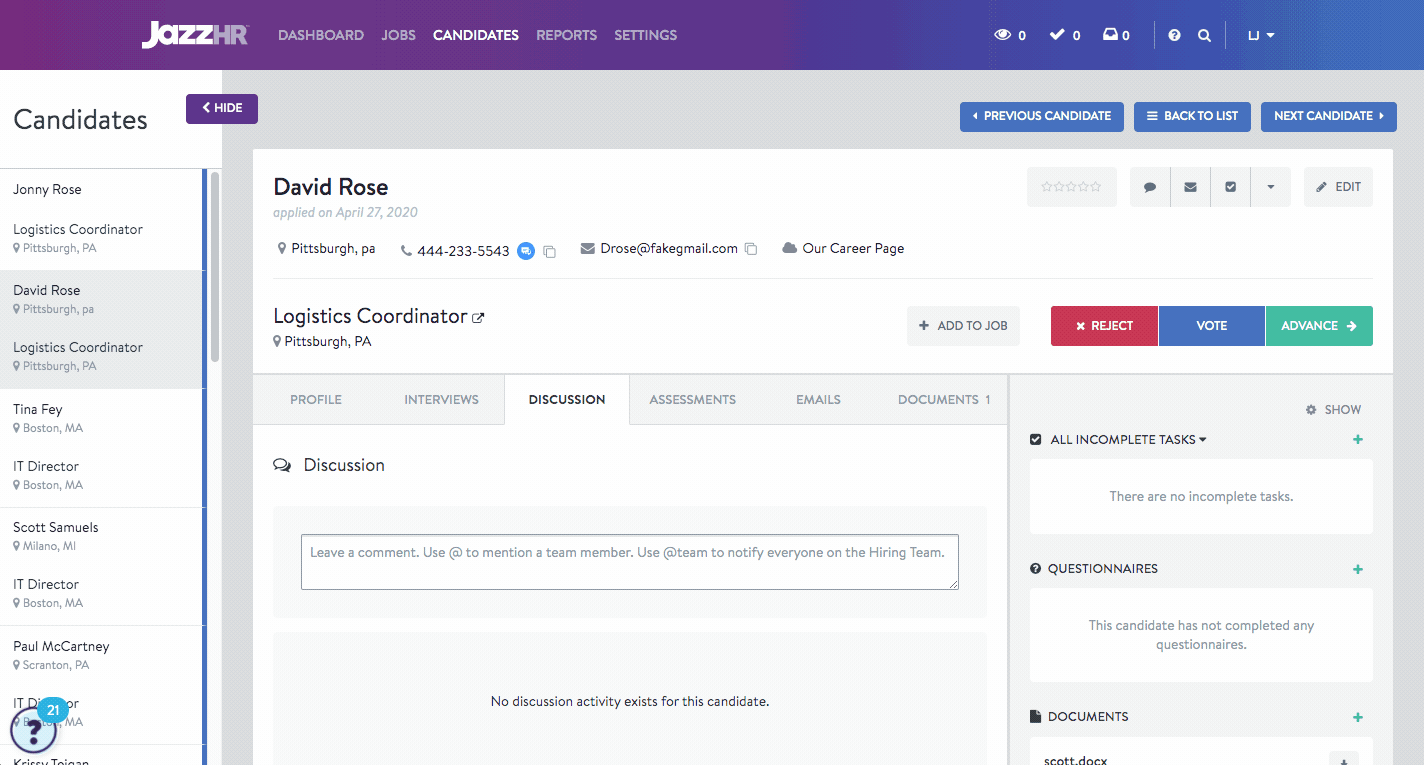You’re close to the hiring finish line: you’ve read resumes, pre-screened applicants, and invited potential hires in for interviews. All that’s left is to process the results and make an offer. This is the moment when the entire recruitment effort comes to a head. Make the wrong decision, and you’ll risk sidling your business with someone who’s not the right fit for the job. Bad hires can be incredibly expensive.
Thankfully, there are best practices for cutting through the noise of interviews and evaluating what really matters about a candidate. Here’s how to nail the post-interview assessment.

-
Reconnect with your priorities
Some of the most important work that goes into a successful post-interview assessment should be set up before the interview itself takes place.
What’s essential to the role you’re trying to fill? Decide on the attributes that are non-negotiable, and prioritize them. Be as explicit about them as possible and ask valuable, relevant questions – and take focused interview notes. Once the interview’s done, it’s then a matter of deciding whether or not the candidate meets those priority criteria.
-
Rate them against your benchmarks
It’s useful to have something that’s easily digestible for all of the decision-makers involved in the hiring process. A rating system is one of the simplest ways to break down a candidate’s skillset and compare them to other applicants.
Rate candidates on the crucial skills you’ve identified, and take an average. If some are far below that average, they may not be right for the job. If some are on the same level, get more granular and look at their scores for individual skills, diving into interview notes for more context. It’s an approach that streamlines the selection process without sacrificing detail and nuance when it’s required. When it comes to determining things like culture fit and personability, the ability to dive into more detail will pay off.
-
Centralize your feedback
If there’s more than one person involved in the hiring and interview process (and there should be), it’s crucial that interview notes, ratings, and recommendations are gathered in a centralized document or platform. Failing to do so can result in disorganization and delays that could cause as many as 66 percent of candidates to move on to new opportunities.
Applicant tracking software (ATS) is built for this exact purpose. It’s a tool designed to gather and manage job advertisements and candidates in one place, and it’s worth considering when improving your post-interview assessments.

-
Counter bias as a team
We all have conscious and unconscious biases, which has to be accounted for in the hiring process – never more so than when considering ‘culture fit’.
The post-interview assessment process must be a collaborative, transparent effort shared by as diverse a group as possible. One person may not think a candidate was friendly or qualified enough, and another might think the opposite. The aim is that non-role-related opinions will be balanced out with teamwork.
You want to make a fair judgment. However, bias can skew your assessments and open your organization to the risk of hefty discrimination lawsuits. With a diverse recruitment team and a centralized paper-trail for your assessment process, you are better able to counteract bias.
Making a confident hire
The post-interview assessment is a tricky one. It has to be timely, fair, and thorough all at once. Even if you get everything right, it can still leave you with some uncertainty. That’s normal. With the processes mentioned above, you can remain confident that you’ve done your due diligence and made the best decision possible for your business. Then, the onboarding begins.





